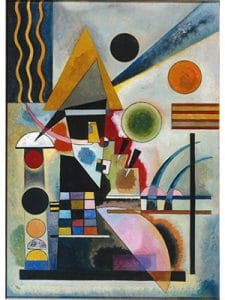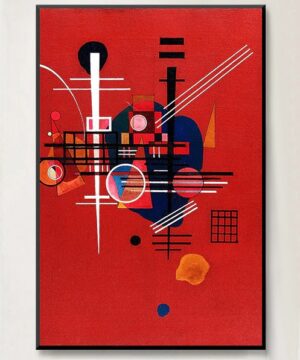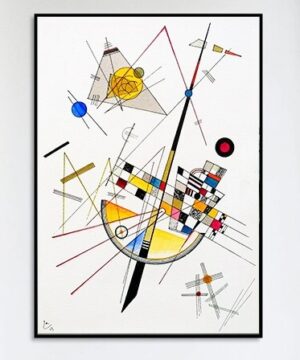Kandinsky

Wassily (Vasily) Kandinsky (1866 – 1944) is known as one of the pioneers of abstract modern art. He was born in in Moscow to upper-class parents of mixed ethnic origins. At an early age, Kandinsky showed a rare sensitivity towards music and the arts, which his father strongly supported. Kandinsky decided to study law, ethnography, and economics, and started successfully lecturing at the university. Despite his success as an educator, he fully focused on the arts and attended art school in Munich at the age of 30. There he studied under Franz von Stuck at the Academy of Fine Arts. Introduced to the artistic avant-garde, he later co-founded the artist’s association and school “Phalanx”, opposing conservative views of the traditional art institutions. Kandinsky familiarized himself with the growing Expressionist movement travelling through Europe and on this basis developed his own style.
Kandinsky came to the notion that only total abstraction could offer profound, transcendental expression. Contrary, copying from nature would interfere with this process. His mature pictorial language only loosely related to the outside world, and instead expressed the artist’s inner experience. The development of this concept can be seen in his three artistic phases, moving from his early, representational pictures full of symbolism to operatic compositions, and finally to his late, geometric flat planes of colour.
Kandinsky’s ideas influenced European artists strongly, including his later students at the Bauhaus to the Abstract Expressionists in the second half of the 20th century.
Showing all 3 results
-

Dull Red No. 400 by Wassily Kandinsky – Canvas Giclée Print
$89.00 – $268.00 -

Squares with Concentric Circles by Wassily Kandinsky – Canvas Giclée Print
$69.00 – $189.00 -

Delicate Tension No. 85 by Wassily Kandinsky – Canvas Giclée Print
$89.00 – $189.00
